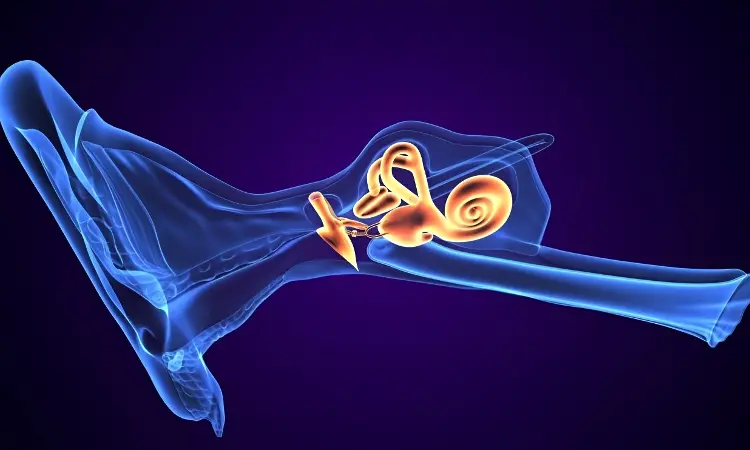- Home
- Medical news & Guidelines
- Anesthesiology
- Cardiology and CTVS
- Critical Care
- Dentistry
- Dermatology
- Diabetes and Endocrinology
- ENT
- Gastroenterology
- Medicine
- Nephrology
- Neurology
- Obstretics-Gynaecology
- Oncology
- Ophthalmology
- Orthopaedics
- Pediatrics-Neonatology
- Psychiatry
- Pulmonology
- Radiology
- Surgery
- Urology
- Laboratory Medicine
- Diet
- Nursing
- Paramedical
- Physiotherapy
- Health news
- Fact Check
- Bone Health Fact Check
- Brain Health Fact Check
- Cancer Related Fact Check
- Child Care Fact Check
- Dental and oral health fact check
- Diabetes and metabolic health fact check
- Diet and Nutrition Fact Check
- Eye and ENT Care Fact Check
- Fitness fact check
- Gut health fact check
- Heart health fact check
- Kidney health fact check
- Medical education fact check
- Men's health fact check
- Respiratory fact check
- Skin and hair care fact check
- Vaccine and Immunization fact check
- Women's health fact check
- AYUSH
- State News
- Andaman and Nicobar Islands
- Andhra Pradesh
- Arunachal Pradesh
- Assam
- Bihar
- Chandigarh
- Chattisgarh
- Dadra and Nagar Haveli
- Daman and Diu
- Delhi
- Goa
- Gujarat
- Haryana
- Himachal Pradesh
- Jammu & Kashmir
- Jharkhand
- Karnataka
- Kerala
- Ladakh
- Lakshadweep
- Madhya Pradesh
- Maharashtra
- Manipur
- Meghalaya
- Mizoram
- Nagaland
- Odisha
- Puducherry
- Punjab
- Rajasthan
- Sikkim
- Tamil Nadu
- Telangana
- Tripura
- Uttar Pradesh
- Uttrakhand
- West Bengal
- Medical Education
- Industry
New technology may analyze head sway and help diagnose vestibular disorders in patients: Study

A recent pilot study by the team led by Jennifer L. Kelly leveraged the advanced technology of the HTC Vive Pro Eye head-mounted display (HMD) to explore a novel method to effectively diagnose vestibular disorders that includes Meniere’s disease (MD) and vestibular hypofunction (VH). This cutting-edge approach focused to measure head sway and to potentially distinguish between the patients affected and healthy individuals. The key findings of this study were published in the recent issue of the Frontiers in Neurology journal.
The study involved 80 adult participants who were divided into 30 healthy controls, 32 with VH and 18 with MD. Each participant underwent a detailed postural control assessment using the HTC Vive Pro Eye HMD that meticulously recorded head sway movements in various directions: anterior–posterior (AP), medio-lateral (ML), pitch, yaw and roll.
The testing protocol included two visual load levels displayed through the HMD, one being a static star scene and the other being an oscillating star scene. Each visual scene lasted 60 seconds and was repeated twice to ensure consistency. The study measured the sway in each direction using the root mean square velocity (VRMS) for the first 20 seconds and the entire 60-second duration of each scene.
The results revealed significant findings in participants with VH. Under the static visual condition, the individuals with VH demonstrated a larger head VRMS in the AP direction and pitch during both the 20 and 60-second assessments when compared to the healthy controls. The dynamic visual condition further amplified these differences where the VH participants showed significant increase in head sway in all directions and at both time intervals. In contrast, the participants with MD did not show significant differences from either the control group or the VH group which indicated high variability and intermediate average head sway values.
These preliminary findings suggest that while head sway metrics collected via HMD are sensitive to VH, yet, they do not conclusively differentiate individuals with MD from healthy controls or those with VH. The study elucidates the potential of using head sway as a clinical tool to assess sensory integration necessary for postural control. Further research involving a larger sample size with the patients having more pronounced symptoms at the time of testing should be recruited.
Reference:
Kelly, J. L., Cosetti, M., & Lubetzky, A. V. (2024). Can head sway patterns differentiate between patients with Meniere’s disease vs. peripheral vestibular hypofunction? In Frontiers in Neurology (Vol. 15). Frontiers Media SA. https://doi.org/10.3389/fneur.2024.1347335
Neuroscience Masters graduate
Jacinthlyn Sylvia, a Neuroscience Master's graduate from Chennai has worked extensively in deciphering the neurobiology of cognition and motor control in aging. She also has spread-out exposure to Neurosurgery from her Bachelor’s. She is currently involved in active Neuro-Oncology research. She is an upcoming neuroscientist with a fiery passion for writing. Her news cover at Medical Dialogues feature recent discoveries and updates from the healthcare and biomedical research fields. She can be reached at editorial@medicaldialogues.in
Dr Kamal Kant Kohli-MBBS, DTCD- a chest specialist with more than 30 years of practice and a flair for writing clinical articles, Dr Kamal Kant Kohli joined Medical Dialogues as a Chief Editor of Medical News. Besides writing articles, as an editor, he proofreads and verifies all the medical content published on Medical Dialogues including those coming from journals, studies,medical conferences,guidelines etc. Email: drkohli@medicaldialogues.in. Contact no. 011-43720751


